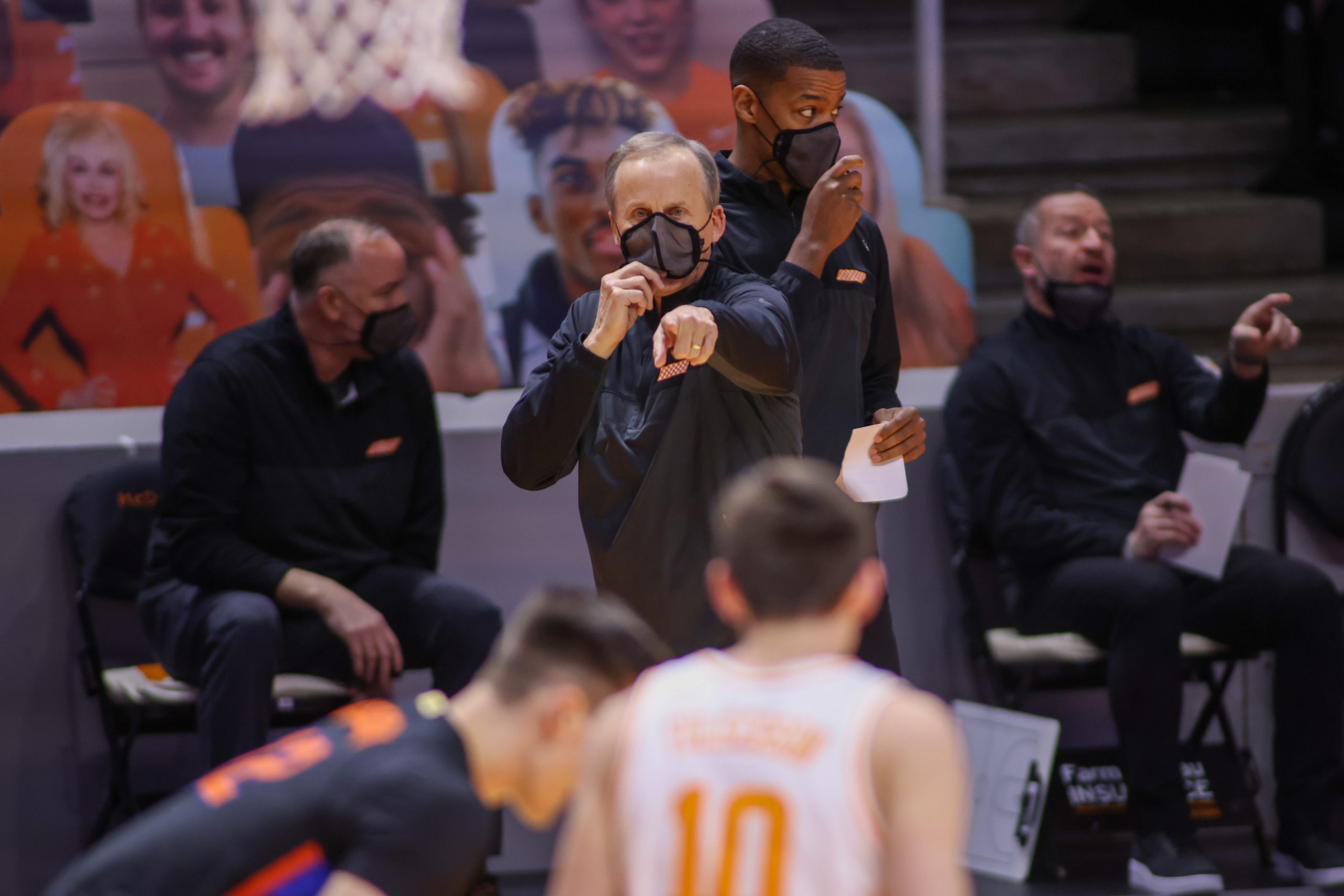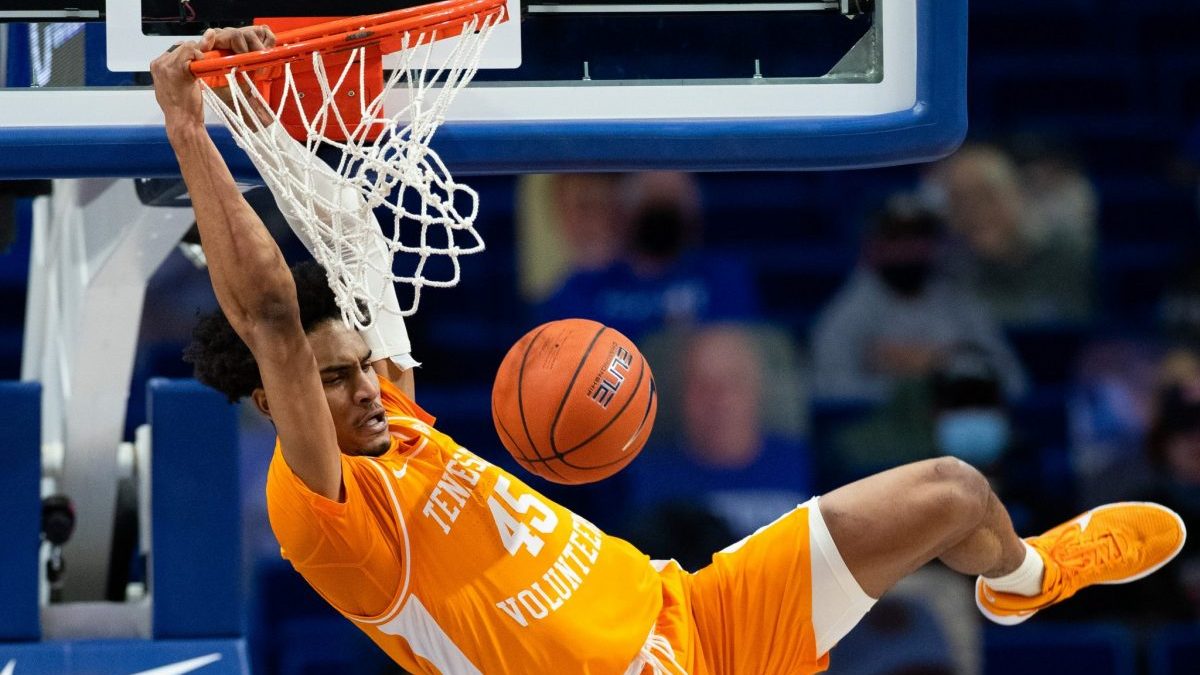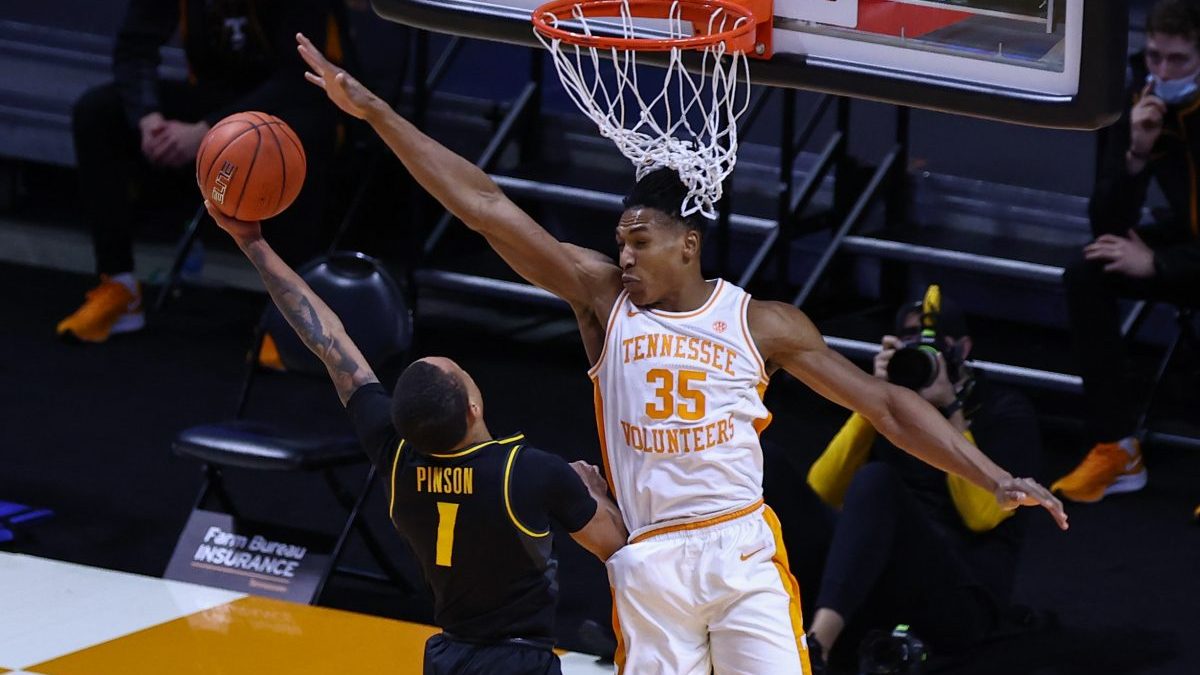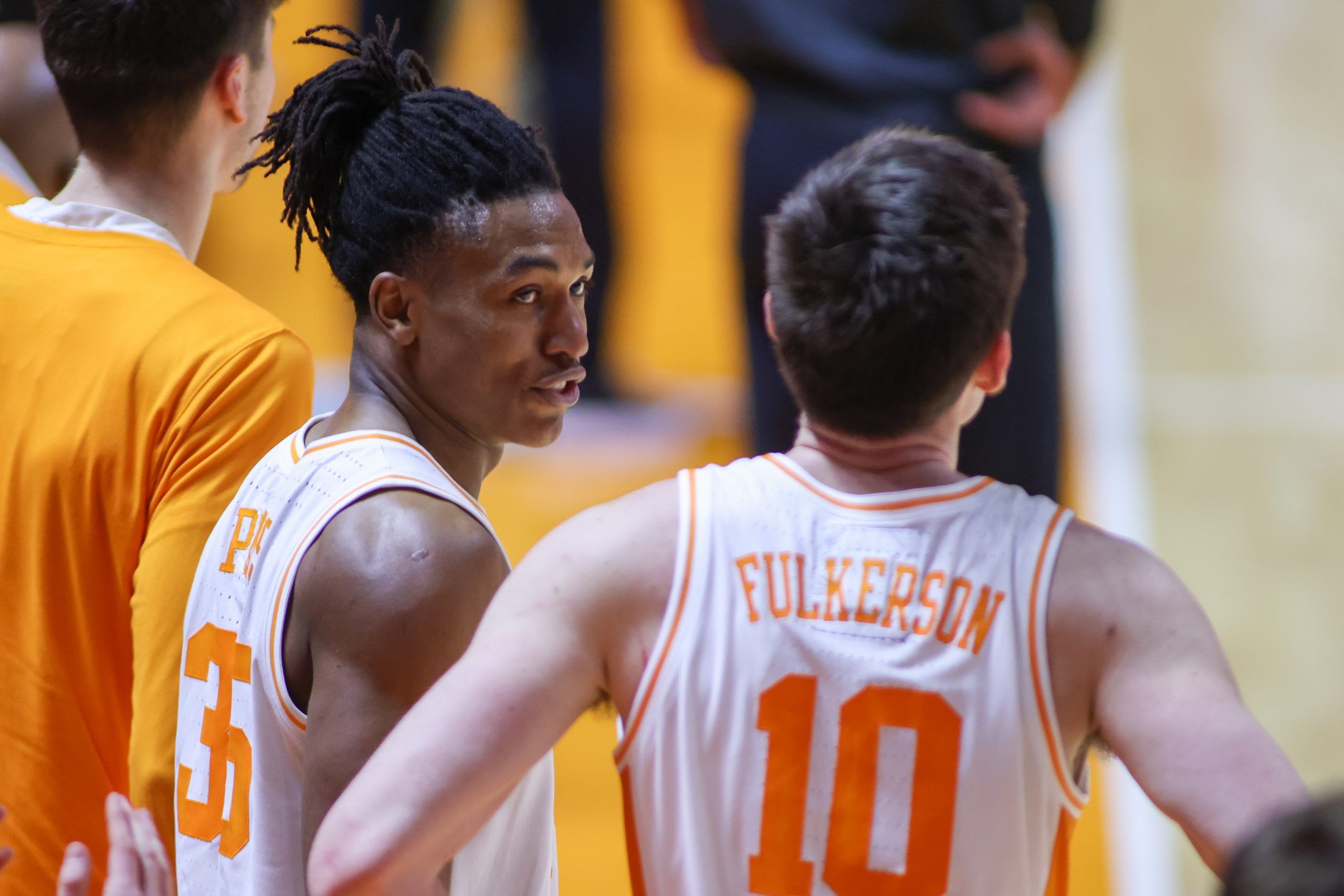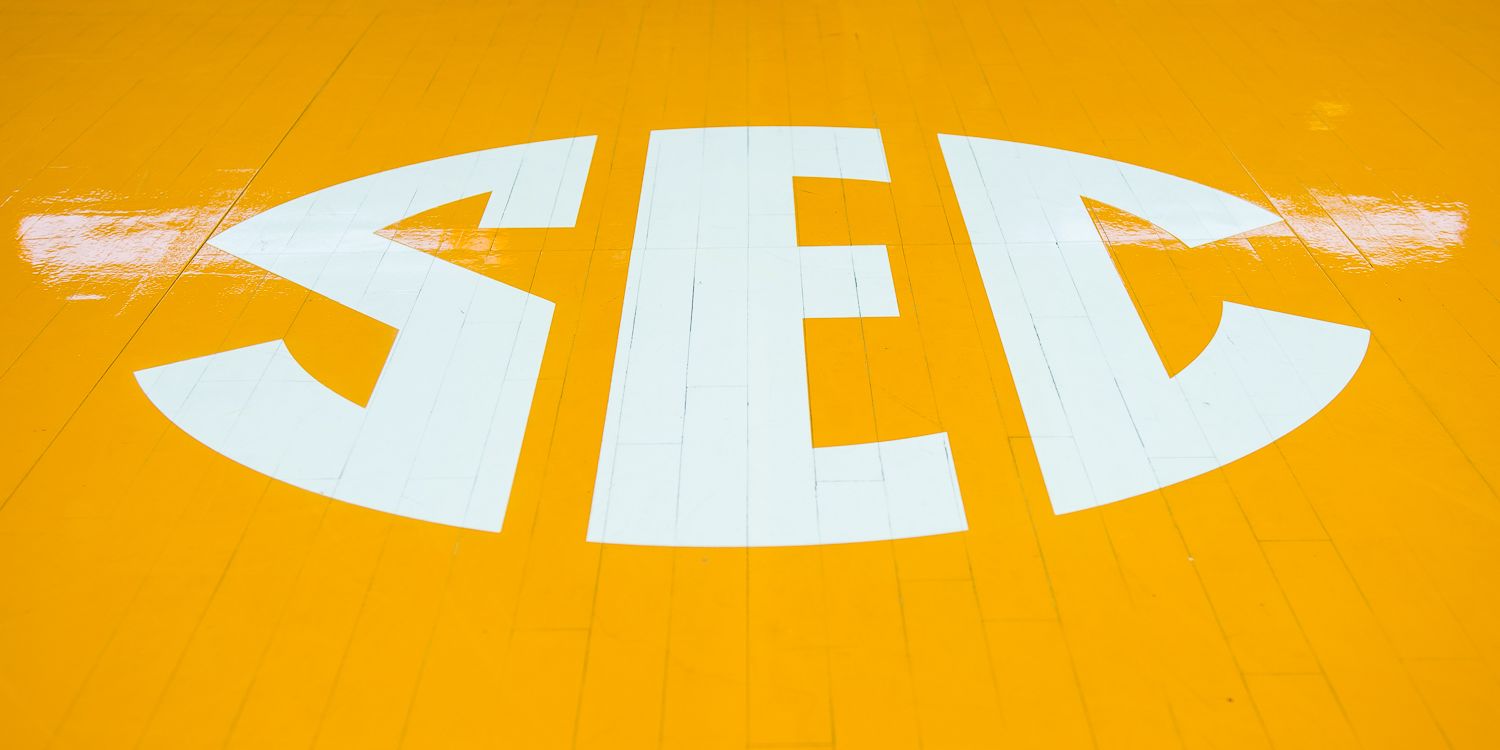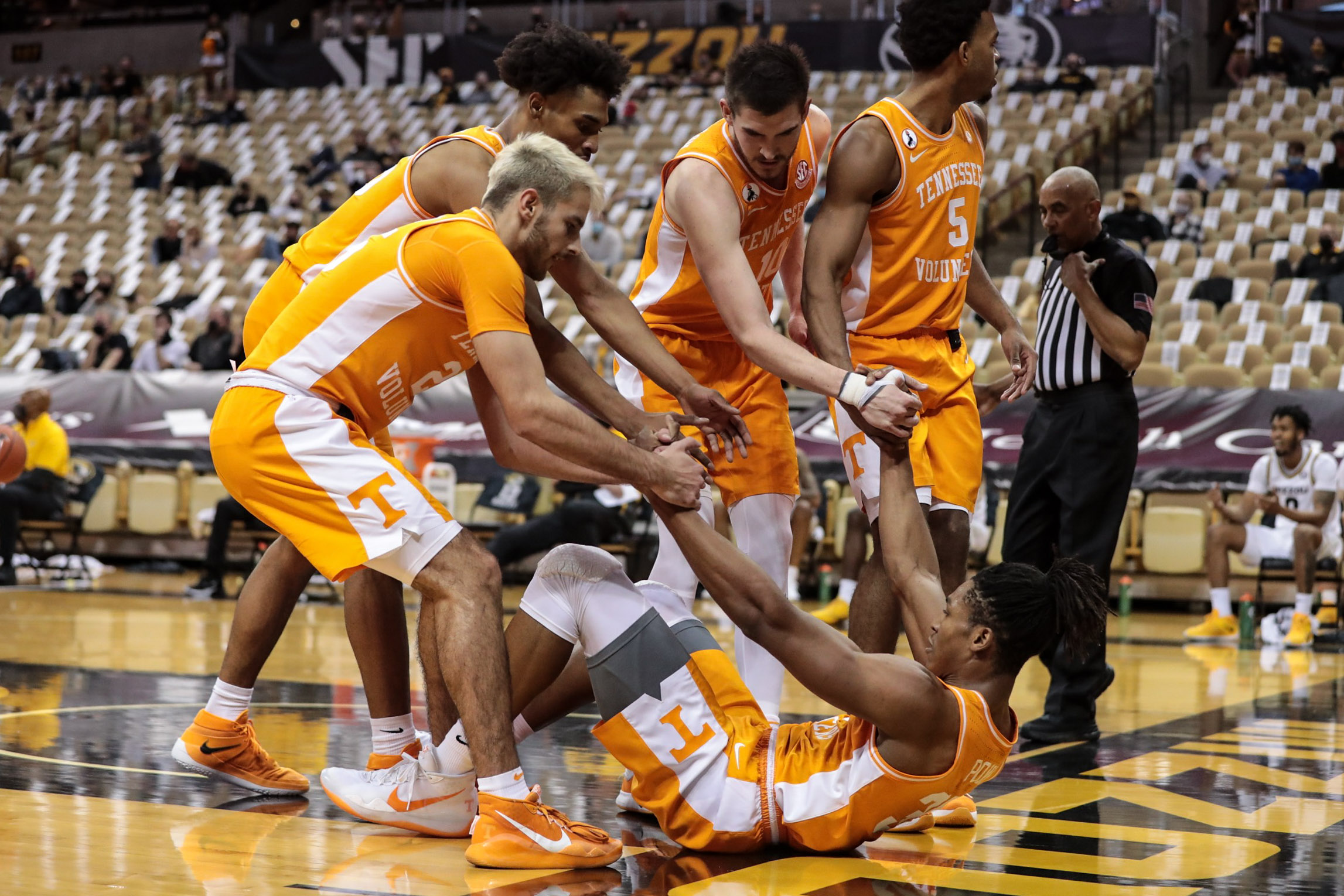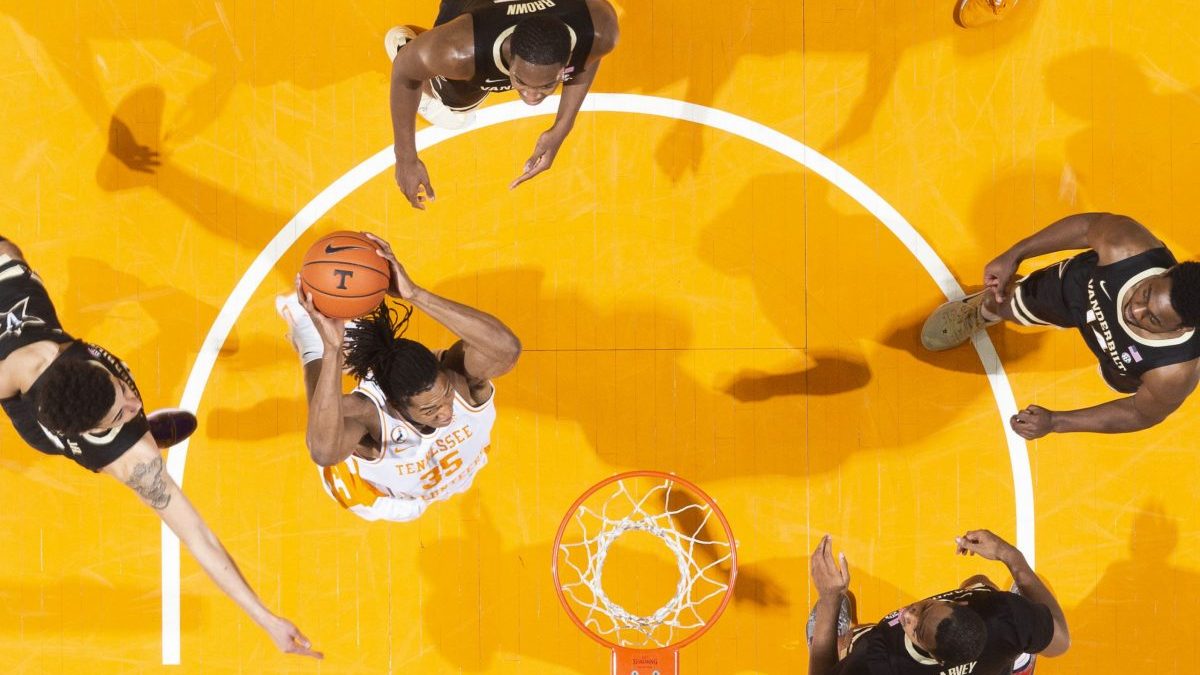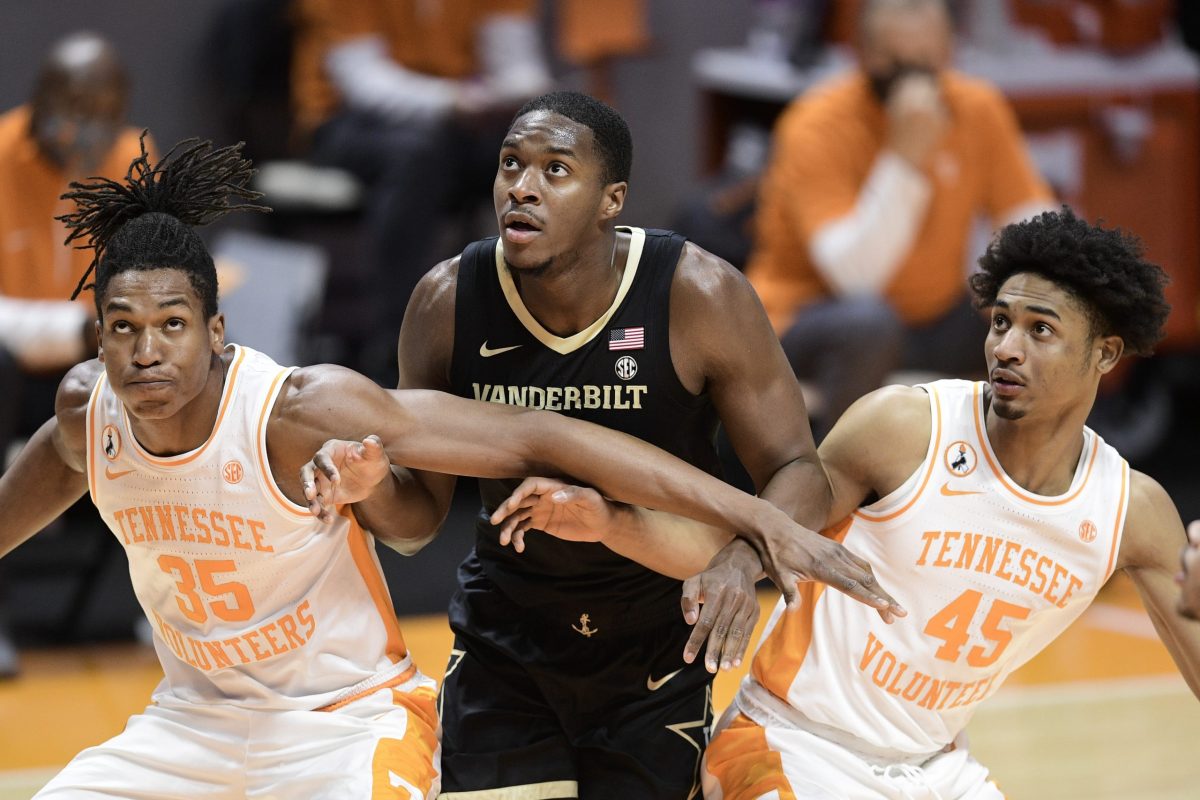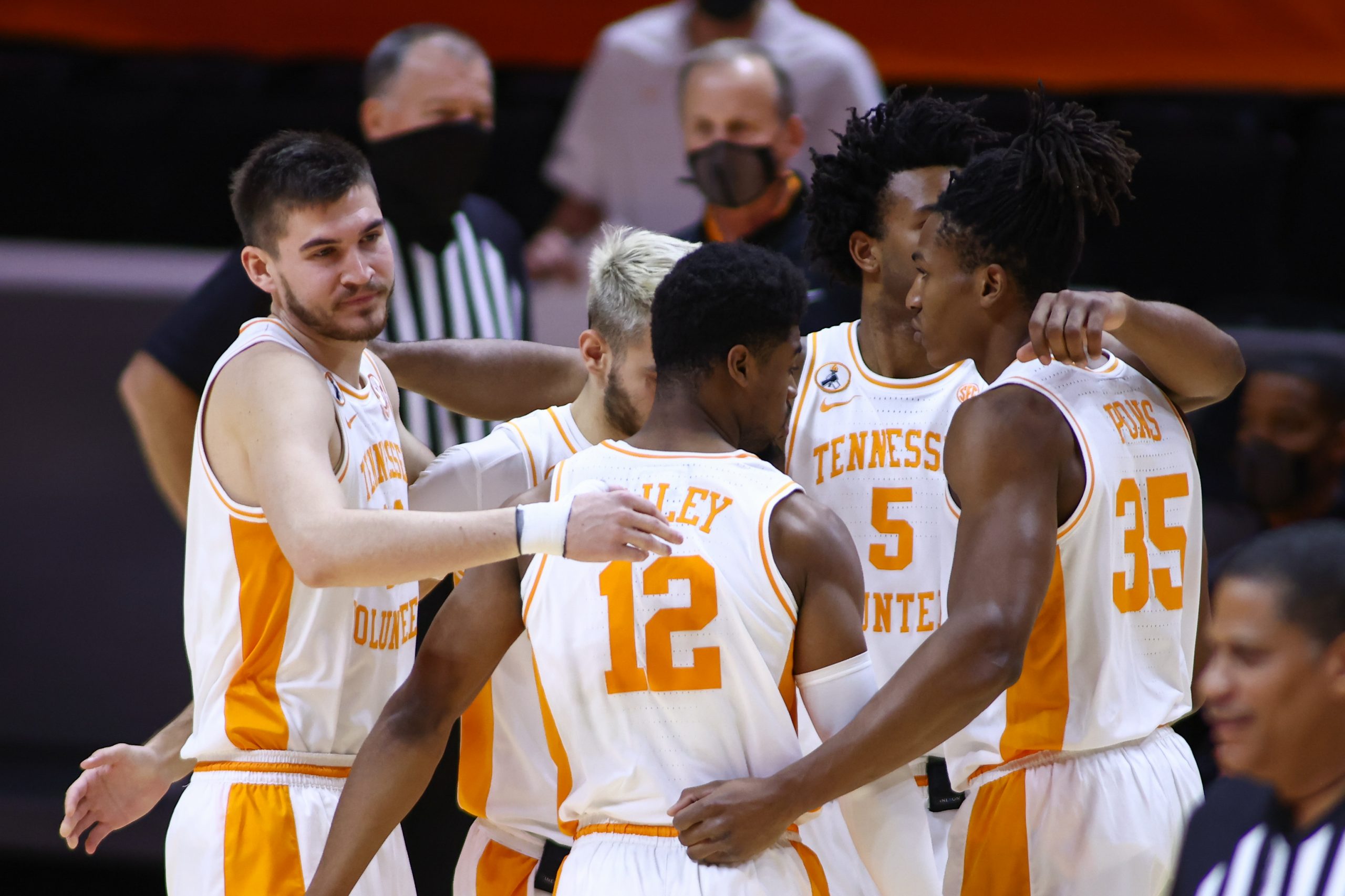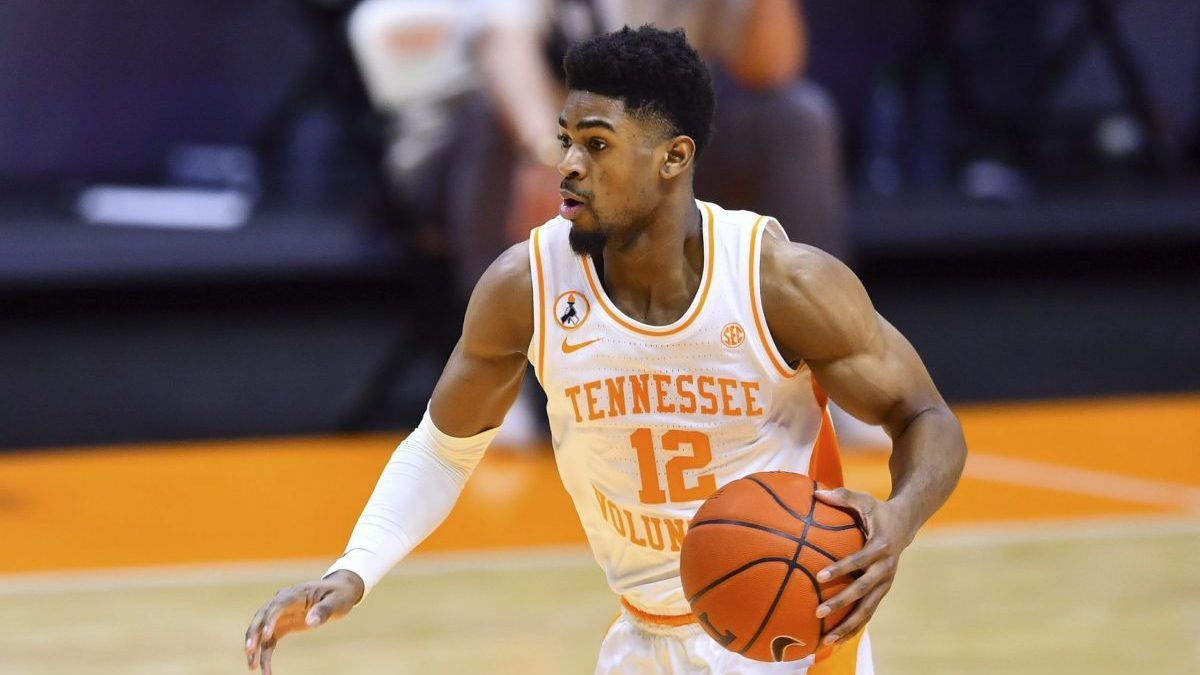What will happen when the Vols and Gators meet for the third time today? Who knows. No Jaden Springer the first time, and the Vols got rolled 75-49. No Tre Mann the second time, and the Vols turned a 14-point deficit into an 11-point win as Florida made just three shots in the final 17:30. Everyone should be firing on all cylinders today…which hopefully includes Tennessee, after going 3-of-18 from the arc in Gainesville and 3-of-21 in Knoxville last week. And the Vols went 12-of-25 at the line the first time and just 8-of-13 the second time. The room for improvement is definitely still on Tennessee’s side.
The Vols are hovering right on the 5/6 line in the Bracket Matrix. Yesterday’s matrix had a strong consensus on the Top 11 teams in the field, including Arkansas, West Virginia, and Kansas on the three line. But there was a big drop in average seed from there to the final number three seed: Villanova, who then lost to Georgetown. If the matrix holds, that should mean a tight field from the last number three seed down through the first two number six seeds: eleven teams that could go anywhere from 3-6. In yesterday’s order with all seeds from the Bracket Matrix:
- #3 Villanova (lost to Georgetown)
- #4 Oklahoma State (beat #3 West Virginia yesterday, vs #1 Baylor 6:30 PM ESPN)
- #4 Texas (beat #6 Texas Tech yesterday, vs #3 Kansas 9:30 PM ESPN2)
- #4 Purdue (vs #2 Ohio State 2:00 PM Big Ten Network)
- #4 Virginia (vs Georgia Tech 6:30 PM ESPN2)
- #5 Florida State (vs North Carolina 9:00 PM ESPN)
- #5 USC (vs #6 Colorado 11:30 PM ESPN)
- #5 Creighton (vs UCONN 9:00 PM Fox Sports 1)
- #5 Tennessee (vs Florida 2:30 PM SEC Network)
- #6 Texas Tech (lost to #4 Texas)
- #6 Colorado (vs #5 USC 11:30 PM ESPN)
In such a tight field from 3-6, the Vols remain in a situation where every game could be worth a seed. Bart Torvik’s predictive bracketology has the Vols as the second #5 seed right now, and their Tennessee Teamcast sends the Vols anywhere to the #6 line with a loss today to the #3 line just by making to to Sunday via Alabama and facing either Arkansas or LSU. Again, the windows are tight, and wins are really valuable this week.
How do the Vols get there? What represents Tennessee’s best basketball as we enter postseason play?
Defense is a given: the Vols are fourth nationally in KenPom’s defensive efficiency, and at the moment still the best Tennessee defense of the KenPom era, with those stats stretching back to 1997. It suffers when Yves Pons or Josiah James leave the floor, so staying out of foul trouble remains key. But Tennessee’s defense is also the best way to unlock the secrets of Tennessee’s offense:
Forcing Turnovers: 14-1 when forcing 14+
The most magical of Tennessee’s numbers. Forcing turnovers is the thing Tennessee’s defense does best, 16th nationally and first in the SEC in turnover percentage. When the half-court stuff breaks down, the Vols can still get it by creating transition opportunities here.
The Vols lost a Quad 1 win in this morning’s NET ratings when the Gators slipped to 31st overall. Tennessee is likely to have six Quad 1 wins regardless of today’s outcome: either beat Florida to get it back, or lose to the Gators but get the one in Knoxville back as they climb up the ratings. To get to seven, they’ll have to win Saturday.
The point is, three of Tennessee’s five current Quad 1 wins featured the most turnovers the Vols have created this season: 22 against Colorado, 20 at Missouri, 20 vs Arkansas (via sports-reference). Tennessee’s lone loss at 14+ is at Ole Miss, where 17 turnovers couldn’t overcome a bunch of weirdness.
Can they win without it? Yes: the Vols got 13 at Rupp, so right on the line. But if you want the, “What if they just made shots,” experiment, that’s Kansas: 53% from the floor, 8-of-13 from the arc, 16-of-17 at the line. If that kind of shooting performance shows up this week or beyond, the Vols will beat anyone not named Gonzaga. The Jayhawks turned it over just seven times and lost by 19 points. They’re 9-2 with an overtime loss and a 13-point win over Baylor since then. If the Vols can’t force turnovers, they need shots to fall to win.
Get to the line (and make them): 87-of-131 (66%) in losses
Again, if the half-court offense isn’t working, get to the line. The Vols are a good free-throw shooting team overall (74.5%, 62nd nationally), and led the SEC in free throw rate. It’s the thing a herky-jerky offense does best.
But in four of Tennessee’s losses (Alabama, Florida, Missouri, Ole Miss), the Vols missed 36 free throws. And at Auburn, Tennessee got to the line for just ten attempts.
Part of getting there means relying on how the game is being officiated; some of Tennessee’s worst basketball would then come from Pons and Josiah getting in foul trouble but the Vols not getting those calls on the other end. It’s a little more reliant on officiating than you’d like.
An important, freshman-related sub-plot here: Jaden Springer is probably the most underrated component of Tennessee’s offense. He’s 82nd nationally in fouls drawn per 40 minutes, shoots 80.4% at the line, and is 18-of-39 (46.2%) from three, even though he doesn’t always take them. It might be a little late in the game to get more threes from him into the offense, but having him go to the rim is a big part of what Tennessee already does well. Keon Johnson does it really well too, 111th nationally in fouls drawn per 40. But the Vols are 16-3 when Keon takes less than 12 shots, 1-4 when he takes 12 or more. That’s not Keon’s fault, that’s the, “Nothing else is working, Keon do something,” offense showing up. The one in that 1-4 is Rupp Arena, but I don’t think Kentucky (or any of us) were prepared for what happened that night, and had a good bit to do with our next main point.
Can they win without it? They just did: only 8-of-13 at the line against the Gators, but that matters less when the other team simply can’t score. If the Vols can’t get to (and convert at) the line, they need their very best defensive basketball to win.
John Fulkerson: 13-1 when he scores 10+
Fulkerson is certainly a part of getting to the free throw line. And again, I don’t think the Vols need 2020 All-SEC John Fulkerson, who averaged 14 and 6, to get their best basketball in 2021. But ten is an important number for him.
In Tennessee’s losses, Fulkerson had four at Auburn, at LSU, and vs Kentucky. He had seven against Alabama and Missouri: against the Tide he went 3-of-8 at the line, against the Tigers he attempted a single free throw. And he had eight at Ole Miss.
In good news for today, the one exception to this rule was the game in Gainesville, when Fulkerson had 15 points. Two of his best games of the season have come against Florida. The Vols are 9-1 when Fulkerson simply attempts eight shots or more, Gainesville also being the exception.
He doesn’t have to carry this team, he just needs to carry his weight. Senior Day was very promising. Let’s see what happens in round three with Florida.
Can they win without it? See Rupp Arena, 2021 edition. But Tennessee’s other wins with Fulkerson in single digits came against bad teams, or the 56-53 slog against Mississippi State. If Fulkerson doesn’t score double digits, you’ll need the freshmen to go supernova. After the first round of the NCAA Tournament, is that a realistic scenario?
Only big basketball games from here boys and girls. Let’s keep the party going.
Go Vols.
